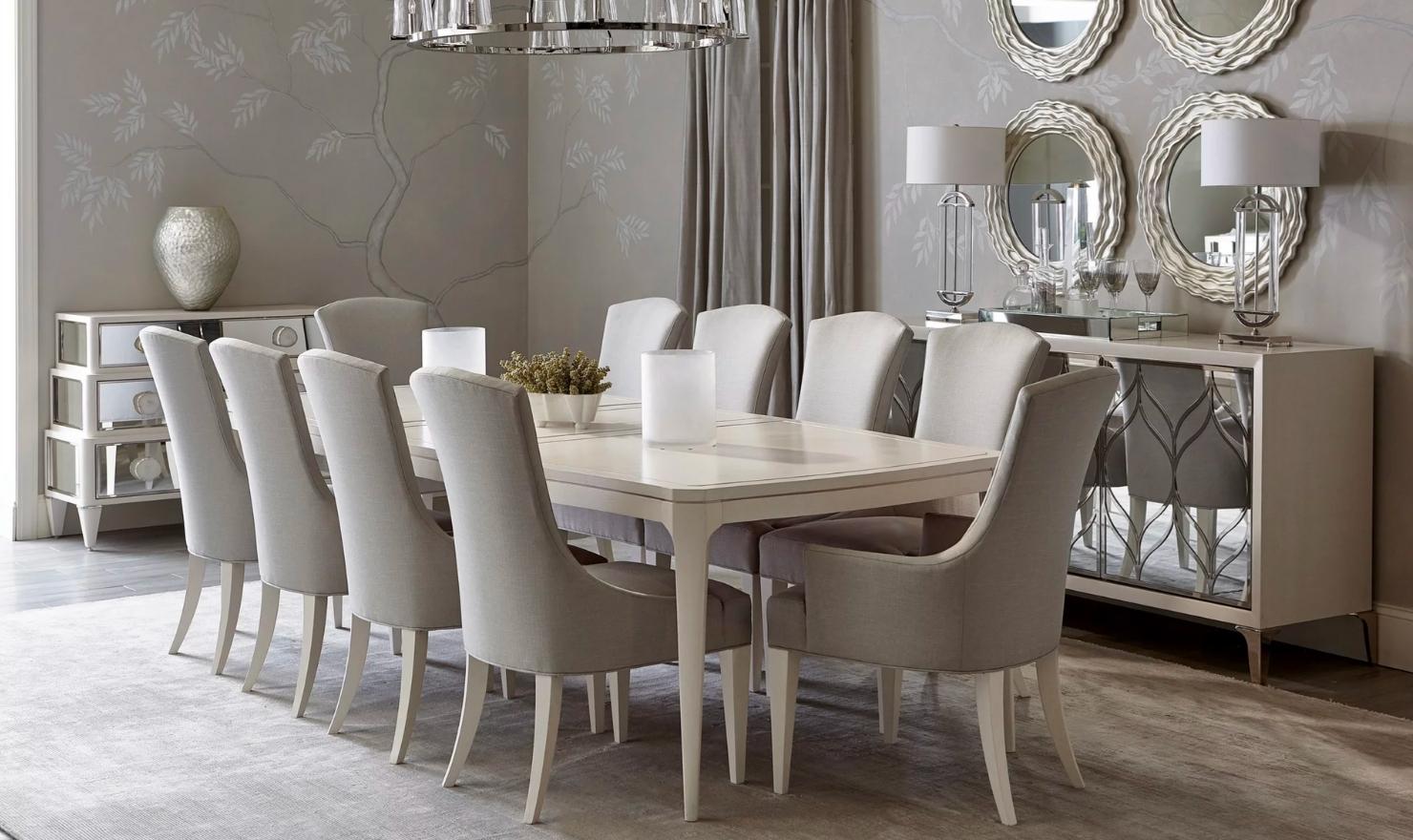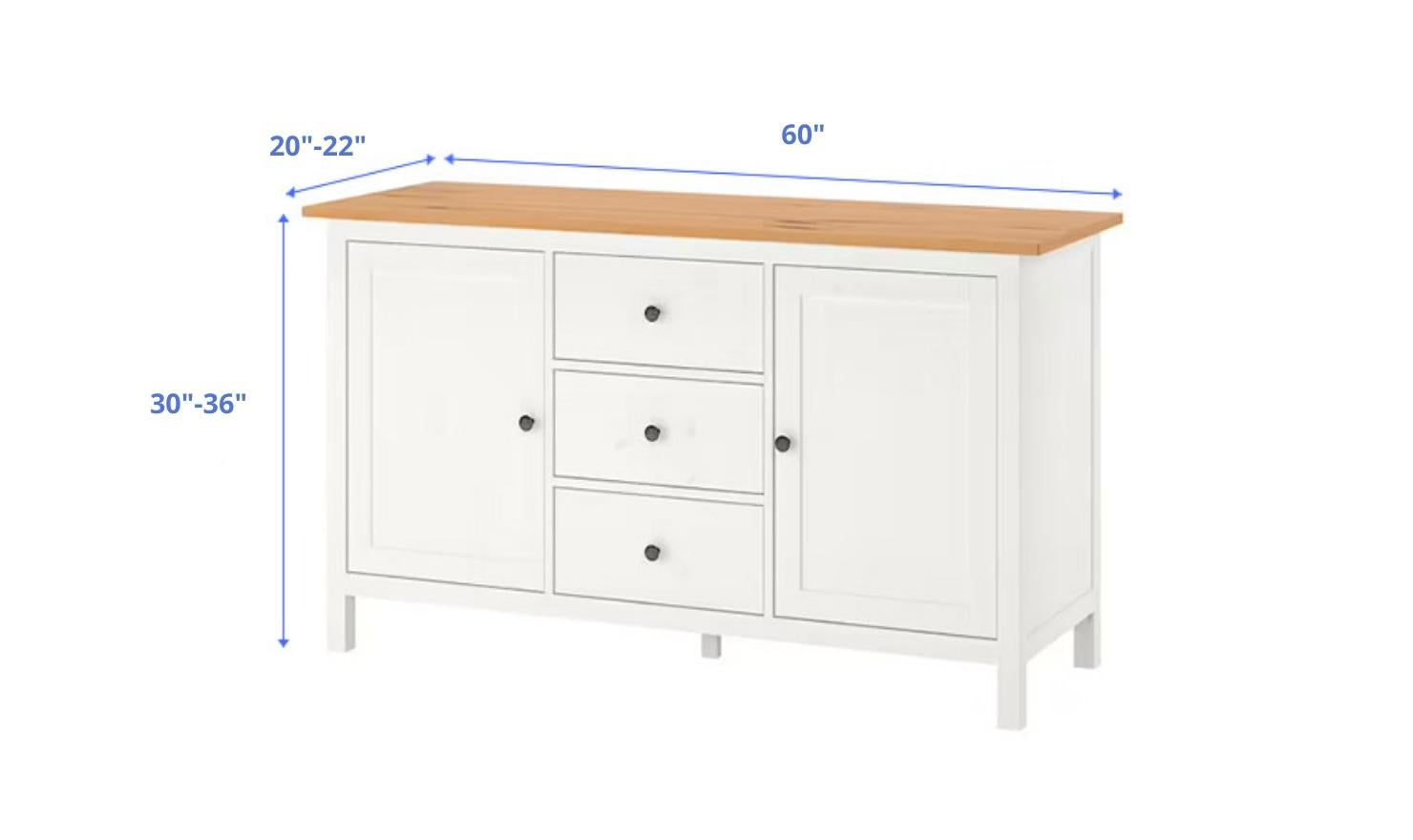Expert Tips To Choose Buffets And Sideboards in 2026

TABLE OF CONTENT
- WHAT IS A SIDEBOARD?
- WHAT IS BUFFET?
- WHAT IS THE DIFFERENCE BETWEEN SIDEBOARDS AND BUFFETS?
- HOW DO SIDEBOARDS AND BUFFETS WORK?
- HOW TO CHOOSE THE RIGHT SIDEBOARD AND BUFFET?
- WHAT IS THE RIGHT SIZE SIDEBOARD OR BUFFET?
- CONCLUSION
A versatile piece of furniture, like sideboards and buffets, is always the best. Why?? Because it's not restricted to a single use alone. It's flexible, adaptable, and ready to handle whatever role you assign it to. However, the process of choosing the right furniture can be daunting.
When you simply type these words on Google, you will be bombarded with hundreds of options. So, to help you choose the best one, we have come up with a guide. Let us simplify it for you.
Sideboards and buffets have been used for decades to store crockery and cutlery, especially in the dining area. But the twist here is that there aren't just cabinets. Besides their storage function, they make a great addition to any home in terms of aesthetics.
Plus, they aren't restricted to the dining area. They can be put in different areas of your home, including the entryways, bedrooms, lounge areas, etc.
This blog has a complete guide to what sideboards and buffets are and how to choose them for your personal space. Let's dive in right now.
WHAT IS A SIDEBOARD?

As the name suggests, a sideboard is a long narrow piece of furniture usually placed next to the dining table. Just as side tables are used with beds, sideboards are used with dining tables. They are used to store dishes and tableware and display ornate items such as fine China and silverware.
Sideboards are often made of wood and have drawers and shelves to store the dishes. They are less decorative than a buffet. They are mainly used in dining rooms, but can also be used in other rooms. You can place them anywhere you like and use them as an accent piece or as a serving table.
WHAT IS BUFFET?

A buffet is a piece of furniture that houses your crockery and cutlery. It is designed to stand against a wall with plenty of storage space. Buffets are often more artistically designed and comparatively larger than sideboards. In addition to wood, metal, and glass, they can be made from many different materials.
The use of buffets is no longer limited to the dining room, they can also be used in other areas of your home and even in commercial spaces such as offices and restaurants. If you have a celebration or party at home, you can use a buffet as a serving table or countertop.
WHAT IS THE DIFFERENCE BETWEEN SIDEBOARDS AND BUFFETS?
With a buffet and sideboards, it's hard to tell the difference, as both look almost identical and serve the same purpose. The main striking differences between sideboards and buffets are:
- Buffets are comparatively larger than sideboards.
- Buffets are more elaborately designed than sideboards.
- Buffets have longer legs, sideboards have short legs or just base skirting.
- Buffets have more counter depth than sideboards.
HOW DO SIDEBOARDS AND BUFFETS WORK?

Whether it's a sideboard or buffet, each piece of furniture is designed to make a difference in your house. On a basic level, they serve as an extra serving counter to the dining table and a place to store dishes. To be precise, you can place dishes on their surfaces in the dining area.
When placed in a living room, put a TV on it. The best part? You can use them to display decor such as vases, sculptures, pictures, and plates on or inside them. Whatever decor fits the space.
Not only does its surface help display items, but the wall against which the buffet or sideboard can also be decorated with wall decor or painting.
HOW TO CHOOSE THE RIGHT SIDEBOARD AND BUFFET?
When we say always, it means always. Always consider the available space before purchasing. Check if the room has space for a sideboard or buffet. What if the sideboard or buffet doesn't fit the space?
This is why we highly recommend measuring your space and comparing it to the dimensions of the buffet or sideboard. When you buy furniture online, decide on the placement, check the dimensions of the furniture, and mark them in that area with masking tape for clear understanding and better perspective. By doing so, you can figure out whether it's suitable for your space or not.
Think of the marked area as a buffet or sideboard, and then check how much circulation space you have left. Because decent foot traffic is important; otherwise, it can look very congested.
Check if it will be convenient to open the drawers, the shutter, etc.
1. START WITH YOUR BUDGET
Budgeting is important. Invest your money wisely.

The first thing to decide is your budget and if required how much extra you can spend. When you have a budget in mind, it makes it easier to limit your options.
Instead of going for something too bulky or made of expensive hardwood, you can easily go for a substitute that gives you the same look without emptying your wallet. These days the market is flooded with alternative materials that cost less and help you achieve a look like that of wood, metal, or stone.
2. USAGE AND PURPOSE
Always prioritize utility over everything else.

Listing purpose and usage will help you determine what is best for you. You can choose what is ideal for you by outlining the purpose for which the furniture will be used. You have to ask yourself questions like:
- Where do I want to store it?
- What do I want to store in it?
- What amount and type of things will I keep in it?
- Does it go well with the interior of my house?
- Is the main purpose decorative, serving, or storing?
This will help you decide whether you want the one with roller shutters and shelves inside, the one with drawers, or a combination of drawers, shutters, and open shelving. It'll help you store more items than dishes in your buffet or sideboard. You can even store shoes, files, or other stuff that you don’t need daily.
Bonus Tip: Pick a sideboard or buffet that has multiple uses: You can store your crockery and cutlery on a sideboard or buffet. However, you can also use these cabinets in other ways, e.g. as a serving table, worktop, display surface, or organizer in the entrance area. You can even use them as stand-alone decorative pieces. So, pick the one that looks good, and has ample and different kinds of storage spaces.
3. SPACE AVAILABILITY
Consideration must always be given to space availability.

When we say always, it means always. Always consider available space before purchasing. Check if the room has space for a sideboard or buffet. Measure your space and compare it to the dimensions of the buffet or sideboard.
When you buy the furniture online, decide on the placement, check the dimensions of the furniture and mark them with Abro/masking tape in that area for clear understanding and better perspective. It will help you figure out whether it's suitable for your space or not.
Think of the marked area as a buffet or sideboard, and then check how much circulation space you have left. Will it be convenient to open the drawers or the shutter etc.?
4. SIZE
It cannot be overstated how important it is to choose the right size.

A sideboard or buffet should be the appropriate size for the room in which it is placed. The size of the new furniture you buy can also depend on where it will be placed and the size and style of your current furniture. As already mentioned, always measure the space before placing a sideboard or buffet there.
You can choose the size that fits snugly without looking odd, using the length and height of the wall as a guide. For example, if you have a low ceiling, choose one that is not too high and is in proportion to the ceiling. You can also use larger ones with high ceilings.
Bonus Tip: Go for a bigger sideboard or buffet: If you have a big family and need more storage space, then you should opt for a larger sideboard or buffet. It will give you more space to store dishes, tableware, and other stuff, help declutter, and eliminate the need for multiple storage cabinets.
5. APPEARANCE
The appearance of the sideboard or buffet has the power to make or break the aesthetic.

Every piece of furniture you purchase must have an aesthetical value. Aesthetics are as important as functionality. Choose a piece that blends seamlessly with the interior of your house. It must match the style and theme of your home. For modern homes, we recommend buying buffets with straight lines that are less curvaceous or carved.
Keep it simple and clean. You can buy the one that matches the color of your furniture or choose different but complementary colors. Do the same for other styles of homes such as traditional, Victorian, transitional, bohemian, etc.
6. QUALITY AND MATERIAL
Quality is what sets a piece of furniture apart from the others.

The first thing to consider is sturdiness. Check how stable the buffet or sideboard is. Can it withstand the weight of the items you intend to store in it?
Second, consider the finish. Check if it is painted, polished or laminated. Ask the questions such as, whether it is scratch-resistant, waterproof, or heat-resistant, and decide accordingly. The finished surface must be easy to clean without the risk of chipping.
Lastly, pay attention to small details such as hardware used, portability, smooth functioning, ease of maintenance, etc.
WHAT IS THE RIGHT SIZE SIDEBOARD OR BUFFET?

Well, there's no right size for a sideboard or buffet, it entirely depends on your space and needs. The right size for you may not be the right size for someone else. Here's a list of standard sizes
- Depth: 20"-22" deep.
- Length: 60 inches (5 feet).
- Height: 30"-36".
Check the latest collection of sideboard and buffet at JenniHome!
CONCLUSION
Whether you want to buy a sideboard or a buffet, they are great home choices. Because they can quickly put on a hat and change its functionality. Place it anywhere in your home, and it will fit in without asking you a question. For instance, they can be used as decorative accent pieces or to store and display crockery, cutlery, books, etc.
But we know that the struggle of choosing sideboards and buffets comes in an array of sizes, materials, etc.
Don't stress over it. When choosing a cabinet, consider the basics, such as your budget, the purpose of the buffet or sideboard, the available space in your home, the size, and your home decor. By simply following the tips above, we are super confident you will crack the code of choosing the best sideboard or buffet for your home.

